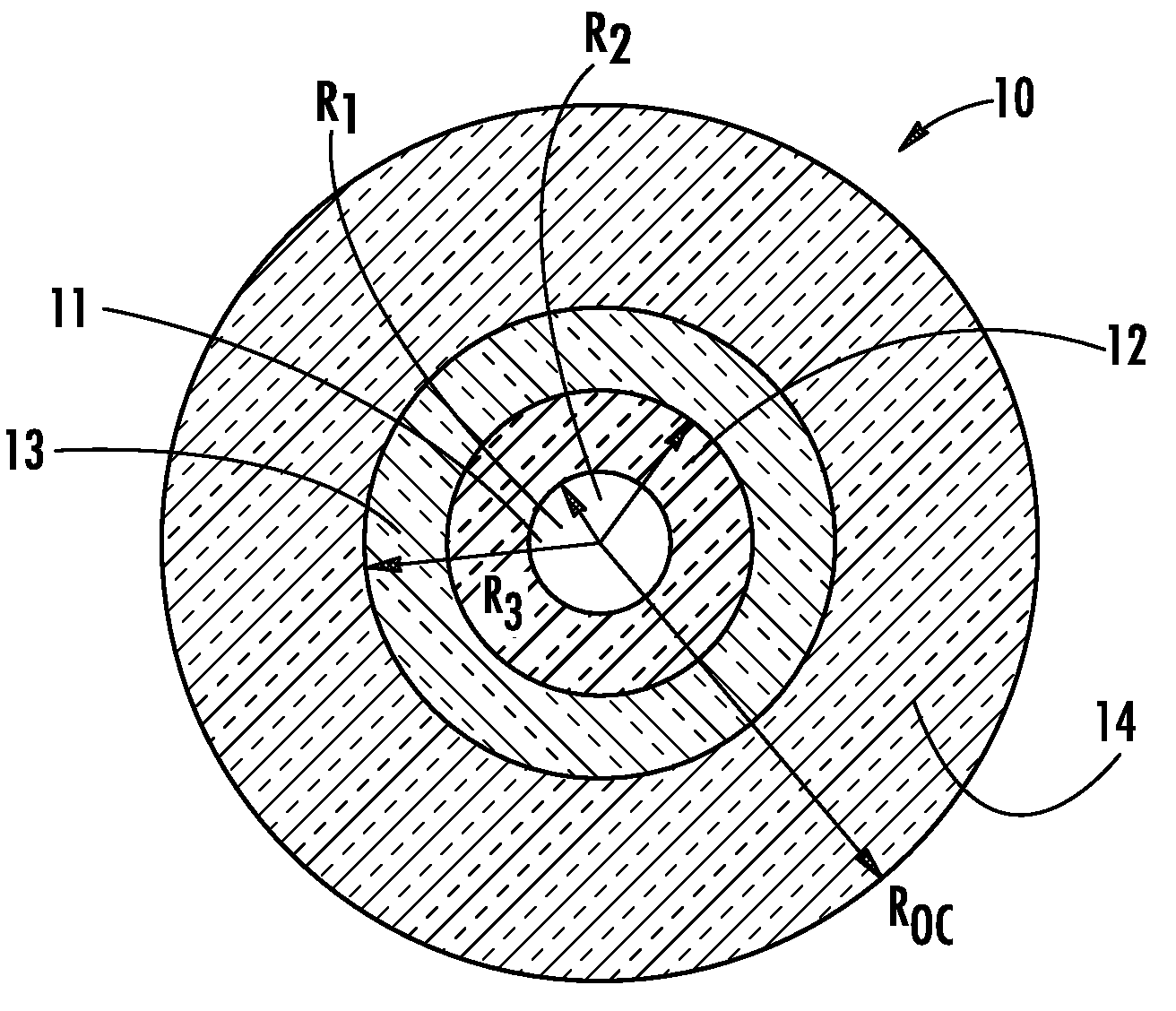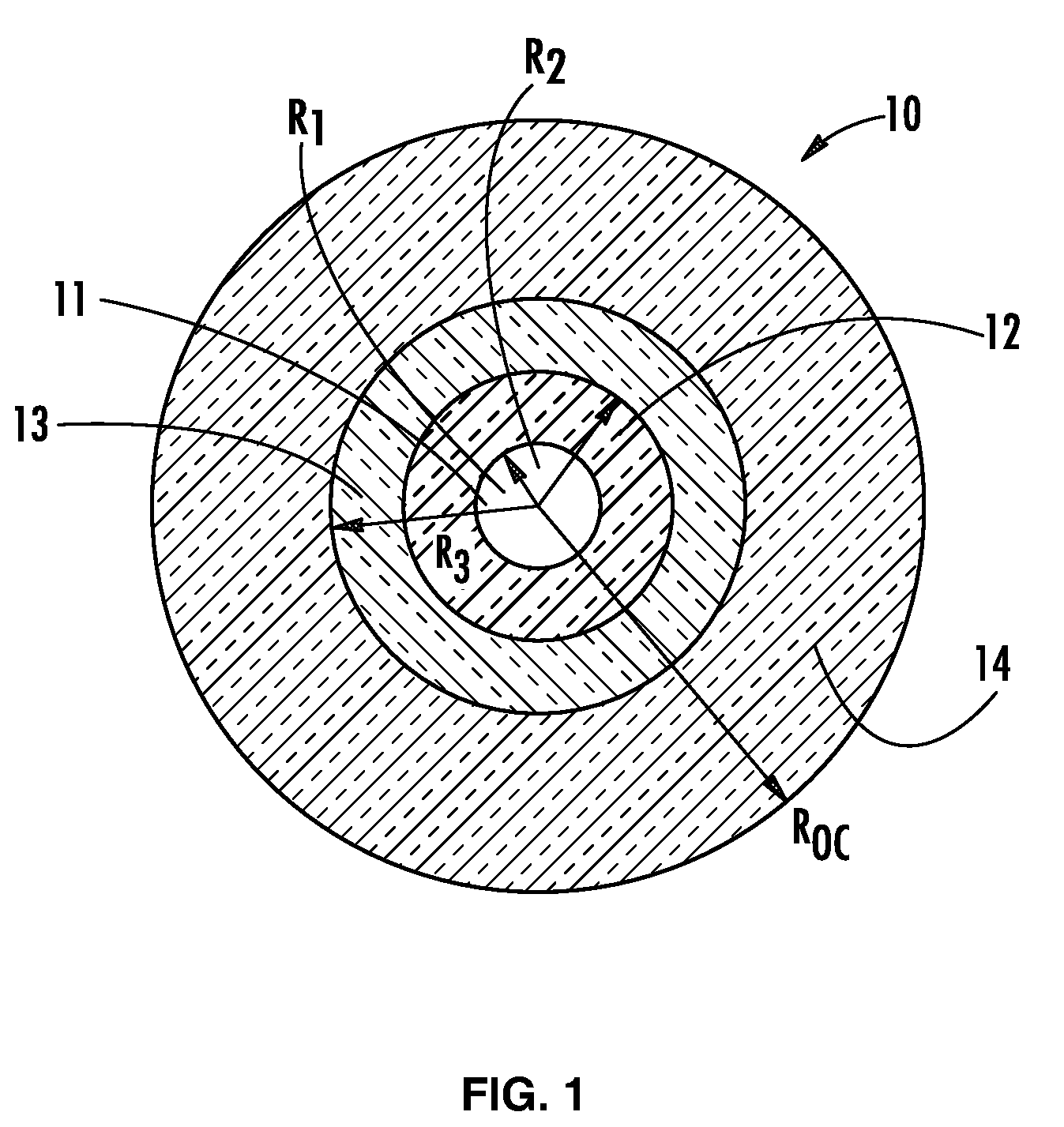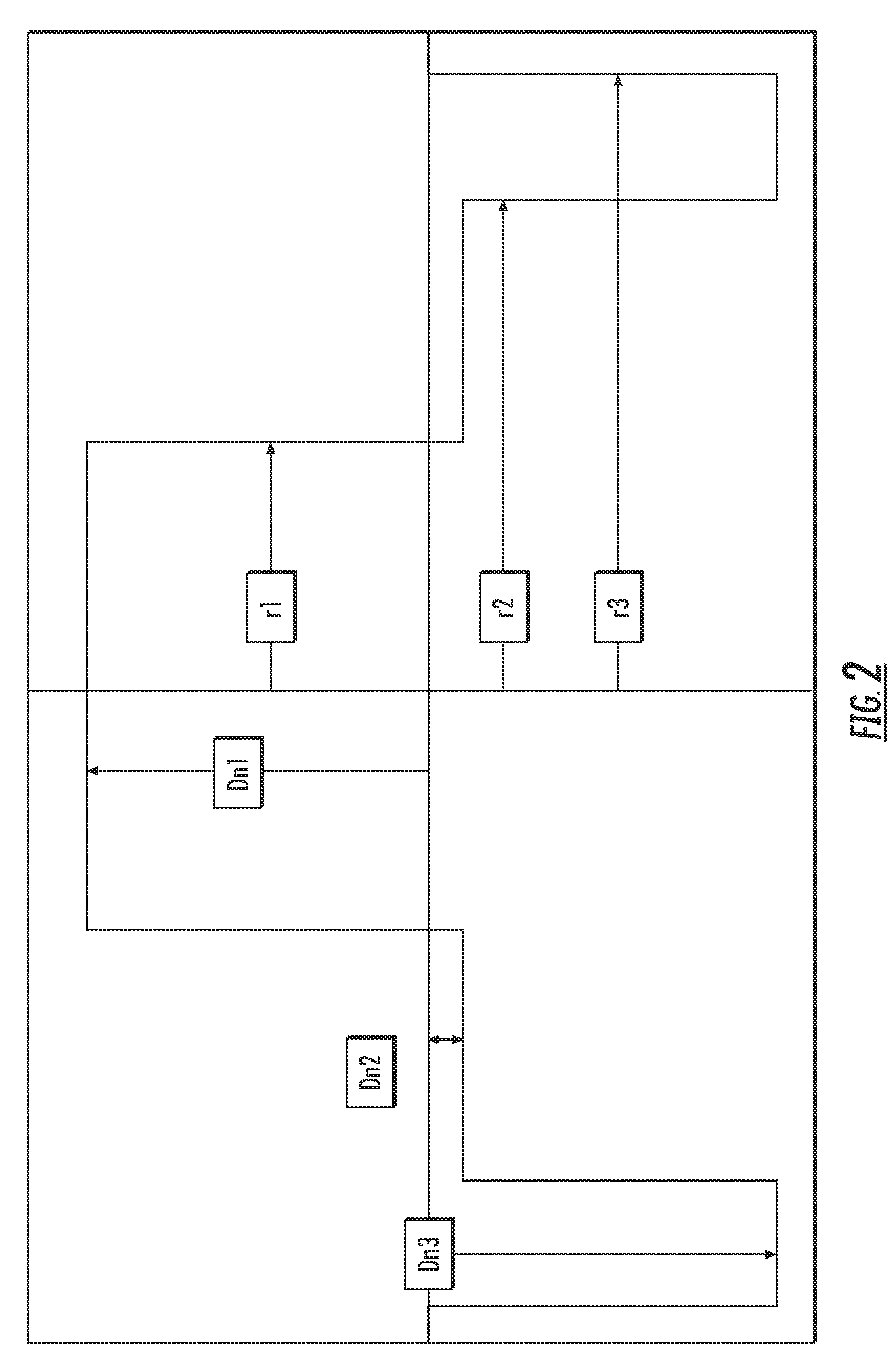Transmission optical fiber having large effective area
a technology of optical fiber and effective area, applied in the field of optical fiber transmission, can solve the problems of limited propagation of leakage modes, and achieve the effect of limiting bending and microbending losses and enlarge the effective area
- Summary
- Abstract
- Description
- Claims
- Application Information
AI Technical Summary
Benefits of technology
Problems solved by technology
Method used
Image
Examples
Embodiment Construction
[0034]In one aspect (and with reference to FIG. 1), the present invention embraces a transmission optical fiber 10 that includes a core 11 having a radius r1 (i.e., the central core region in which the optical signal to be transmitted is guided) and a cladding region for confining the optical signal in the core 11. The cladding region includes a first inner cladding 12 (i.e., the “intermediate cladding” having a radius r2), a depressed second inner cladding (i.e., the “depressed cladding” having a radius r3), and an outer cladding 14 (e.g., an external optical cladding having a radius roc). The transmission optical fiber has (i) an effective area (Seff) of greater than about 120 μm2 as measured at a wavelength of 1550 nm and (ii) an effective cutoff wavelength (λCeff) of less than 1600 nm.
[0035]To define a nominal refractive index profile for an optical fiber, the index of the outer cladding is generally taken as a reference. The index values of the central core and of the claddings...
PUM
 Login to View More
Login to View More Abstract
Description
Claims
Application Information
 Login to View More
Login to View More - R&D
- Intellectual Property
- Life Sciences
- Materials
- Tech Scout
- Unparalleled Data Quality
- Higher Quality Content
- 60% Fewer Hallucinations
Browse by: Latest US Patents, China's latest patents, Technical Efficacy Thesaurus, Application Domain, Technology Topic, Popular Technical Reports.
© 2025 PatSnap. All rights reserved.Legal|Privacy policy|Modern Slavery Act Transparency Statement|Sitemap|About US| Contact US: help@patsnap.com



